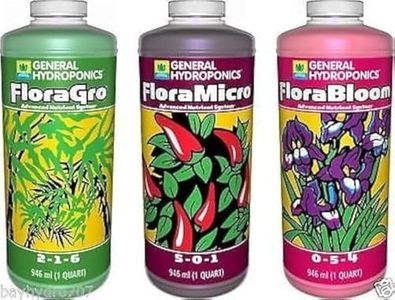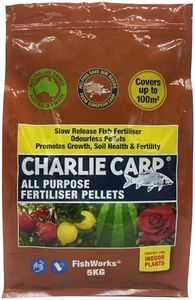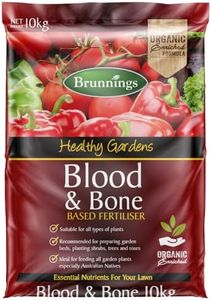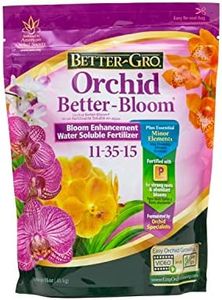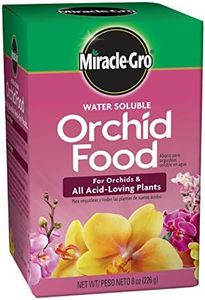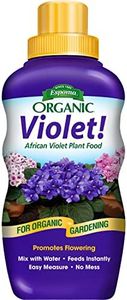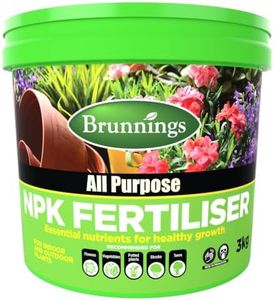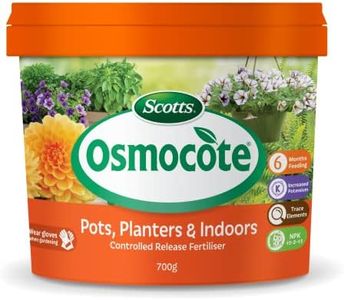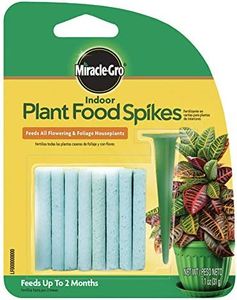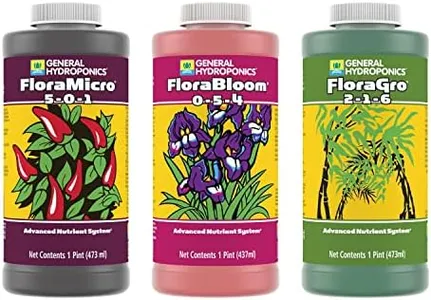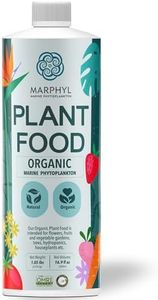We Use CookiesWe use cookies to enhance the security, performance,
functionality and for analytical and promotional activities. By continuing to browse this site you
are agreeing to our privacy policy
10 Best Houseplant Fertilizers
From leading brands and best sellers available on the web.Buying Guide for the Best Houseplant Fertilizers
Choosing the right houseplant fertilizer can feel overwhelming because of the variety of formulas and claims on labels. To keep your houseplants healthy, you’ll want to consider your specific plant types and their unique needs. The best approach is to learn what each part of a fertilizer label means and match it carefully to your plant’s life stage, growth goals, and the environment they live in. If you focus on the key specs, you'll be much more confident selecting a product that supports vibrant growth and minimizes the risk of damaging your plants.NPK RatioThe NPK ratio indicates the percentages of Nitrogen (N), Phosphorus (P), and Potassium (K) in the fertilizer. Nitrogen helps leaves grow, phosphorus encourages strong roots and flowers, and potassium supports overall health. High nitrogen ratios are good for leafy green plants, while formulas higher in phosphorus benefit flowering and fruiting plants. Balanced ratios suit most typical houseplants. Always choose an NPK ratio tailored to your plant’s current needs—for example, more nitrogen for new leaf growth or balanced if you're unsure.
Fertilizer FormFertilizers come in liquids, granules, spikes, and slow-release forms. Liquids act quickly and are easy to adjust, granules and spikes are convenient but may release nutrients more slowly, and slow-release types feed over a longer time with less frequent application. Liquid is ideal if you're attentive and want more control, whereas spikes and slow-release types suit busy plant owners or those prone to forgetting fertilizing schedules.
Synthetic vs. OrganicSynthetic fertilizers are manufactured and often deliver nutrients fast, leading to quick results, but if overused, they can cause salt build-up in soil. Organic fertilizers come from natural sources and usually release nutrients slower, improving long-term soil health and are safer for sensitive environments or edible plants. If you want instant results, synthetics can help, but if you prefer a gentle, eco-friendly approach, organic is a better fit.
Micronutrient ContentBesides the main NPK nutrients, plants also need small amounts of micronutrients like iron, magnesium, and calcium for balanced health. Some fertilizers include these extras, ensuring your plant isn't missing any essentials. Micronutrient-rich options are key if you notice yellowing leaves or other deficiency signs, especially with diverse plant collections or if you use the same soil for a long time.
Application FrequencyDifferent fertilizers need to be applied at varying intervals, from every watering (for dilute liquids) to once every few months (for slow-release types). This affects your maintenance routine. Pick a product that fits how often you’re willing to fertilize—consistent feeders for attentive growers, and less frequent ones for those who travel or forget regular care.
Plant-Specific FormulasSome fertilizers are made for specific types like orchids, succulents, or tropicals, with tailored nutrient profiles. While general-purpose fertilizers work for most, these specialized products can help your plant type thrive. Choose these if you have many of the same type or care about optimizing growth, but general blends are fine if your collection is mixed or you want simplicity.


